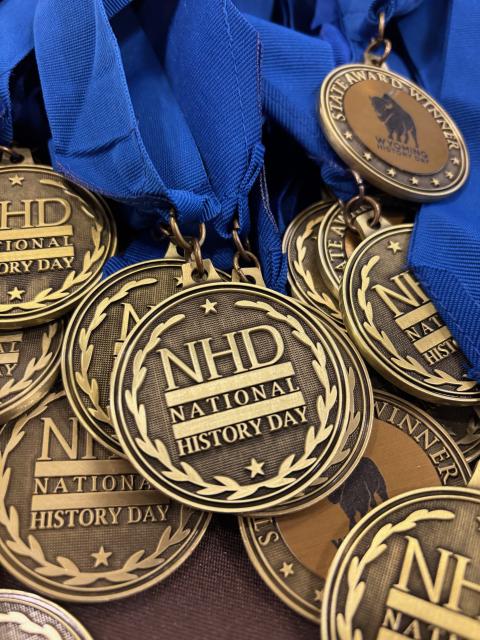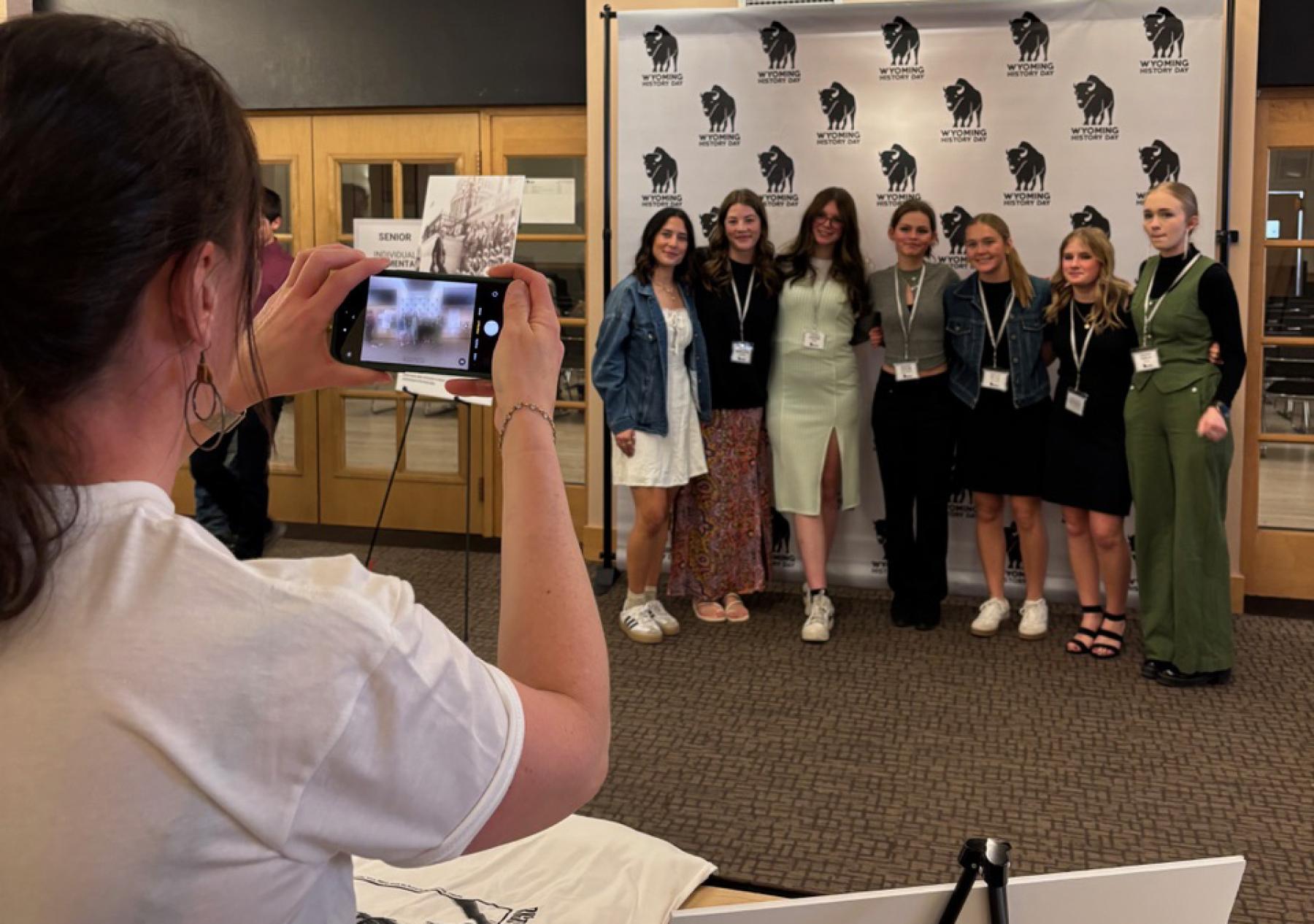One More Day in Wyoming History
By Tom Rea
At Wyoming History Day this year, the authors of 10 high school research papers made it through their regional contests to compete at the University of Wyoming in Laramie the last week in April.

Two other history-minded individuals, UW graduate student Kendall Diaz and WYDOT archeologist Chelsea Cheney, and I got to judge the papers. There were plenty of other categories besides papers. Middle-school or high-school students could enter projects as groups or individuals in documentary, exhibit, performance or website categories—plus papers. There were 155 students altogether at the state competition, from 18 different schools around Wyoming, some homeschoolers and some students from an afterschool program in Laramie. Students who win first or second place in their category are eligible to travel to the University of Maryland in June for the national contest. This year’s theme, to which all projects must relate, was “Rights and Responsibilities.”
Ten papers are a lot; in previous years when I’ve judged, there have been far fewer. These are big projects for high schoolers—and they do them in addition to their regular schoolwork. In addition to the main paper, students are required to submit a so-called process paper where they discuss, perhaps, how they came to the topic and what sources they used. Papers may not run longer than 2,500 words—that’s eight or ten double-spaced typed pages—and they must include annotated bibliographies divided into primary and secondary sources.
All ten were fascinating. Two of the ten were about Wyoming. Topics included a paper on the World War I draft, how it came about and at least one person who resisted it; a paper on the McCarthy era focusing on Senator Margaret Chase Smith of Maine who, early on, stood up to the famous demagogue; a paper on the philanthropist and community leader Jane Ivinson of Laramie; a paper on the serial killer John Wayne Gayce; a paper on the history of the Medicine Bow National Forest and early conflicts between miners, timberers, ranchers and the U.S. Forest Service; a moment-by-moment account of the assassination in Sarajevo of Archduke Franz Ferdinand and his wife, the Countess Sophie Chotek, which led to the outbreak of World War I; a paper on the federal Racketeer Influenced and Corrupt Organizations Act (RICO), how it was originally written and used to prosecute mobsters and used more recently to charge the then-former President Trump; a paper on the Black women of early NASA, the same three featured in the move “Hidden Figures;” a paper on the great western landscape painter Thomas Moran; and a paper on Congress’s passage of the Equal Rights Act in 1972 and the failure—so far—of a sufficient number of states to ratify it in order for it to become part of the U.S. Constitution.
Bryce Mittlestadt, a social studies teacher at Kelly Walsh High School in Casper, also directs the statewide program. Most students begin work on their projects in the fall. Staff of the of the American Heritage Center, the world-class archive of western and American history at UW, work closely with him and act as hosts of the event.
We judges received the papers in our emails four or five days in advance of the contest. This allowed time to read them all in advance and fill out for each a History Day scoring sheet that also left room for unspecified comments. Make sure and be positive, Mittelstadt advised us—that part was easy—and don’t go on too long. That part was harder. Say first what you see as the paper’s strength—one or two sentences—and spend another sentence or two on ways the student might improve it.
On the morning of the contest, each of the authors came before us judges for 10-minute interviews. It’s a great system, as it let us briefly meet the personalities—just as diverse as their topics—behind the words. We asked them all pretty much the same questions: Can you tell us what drew you to this topic? What was your favorite source?

Among my favorite answers was from the student who wrote about McCarthyism. He especially enjoyed, he said, reading a selection of Eisenhower’s private letters made available by the National Archives. The letters show that the president thought McCarthy despicable, while also feeling that if he spoke out publicly against the senator, the publicity would only advance the demagogue’s cause. What a great thing, we thought, for any of us history lovers to encounter—the private struggles behind the public version of events. Hooray, we all agreed for primary sources! It was so great to see all these students going there again and again in the never-ending search for what really was going on.
For a look at some of the consequences of McCarthyism in Wyoming,read Baseball, Politics, Triumph and Tragedy: The Career of Lester Hunt
Tom Rea is editor emeritus of WyoHistory.org. Photos by Bryce Mittelstadt, Wyoming History Day
